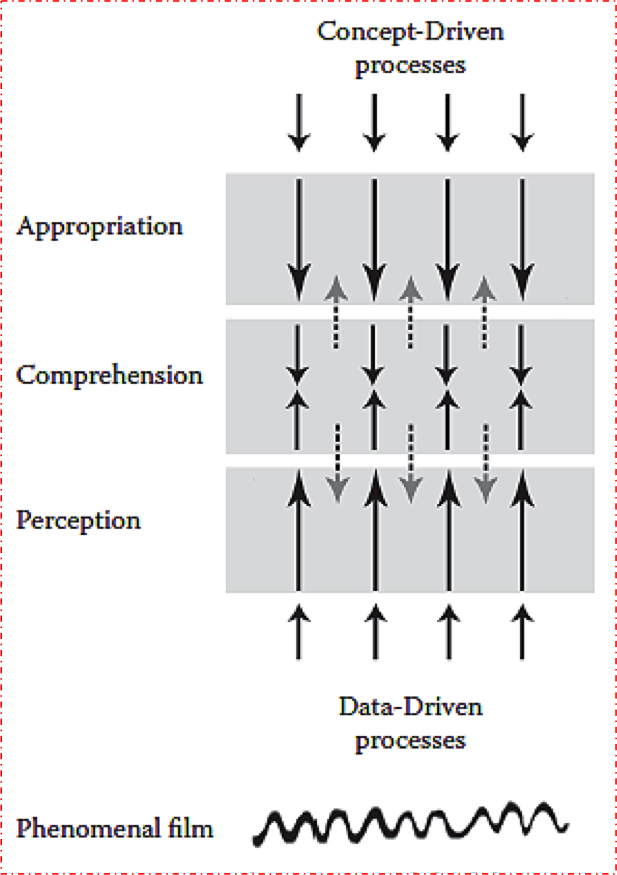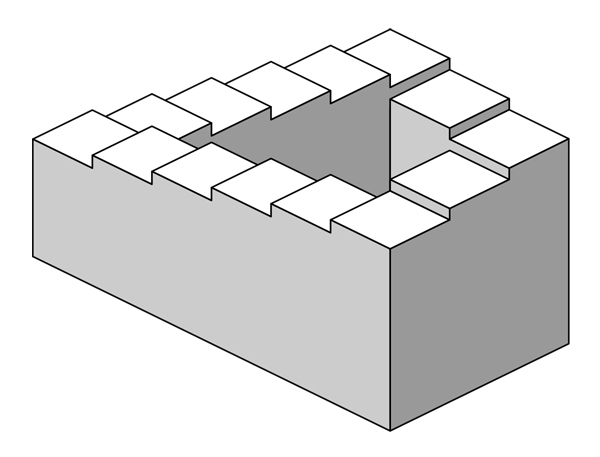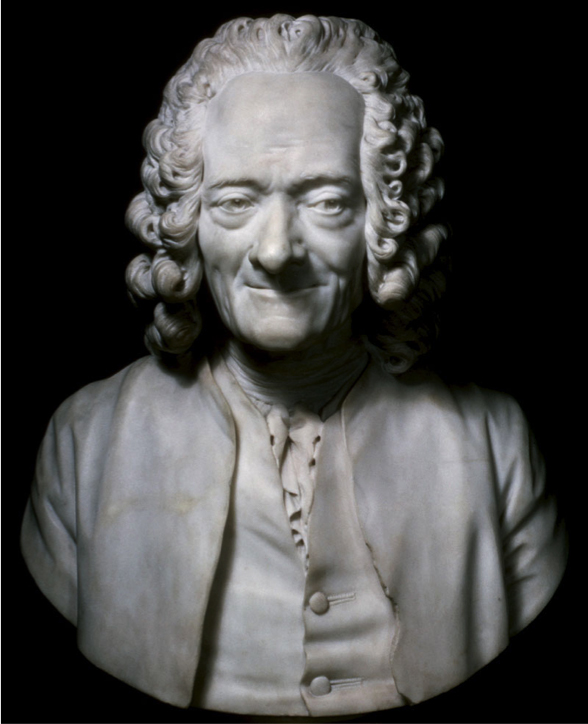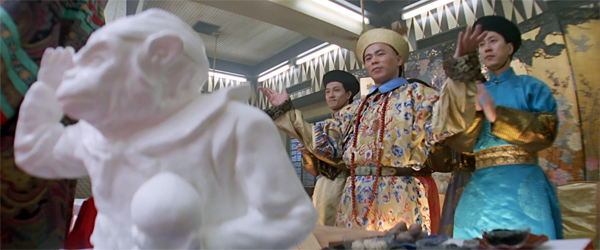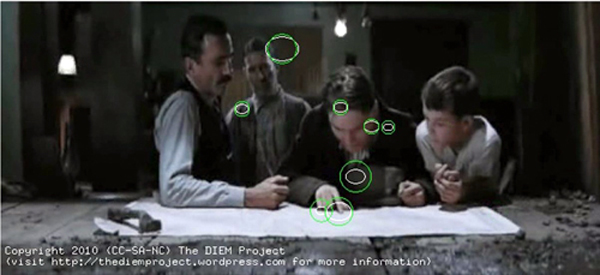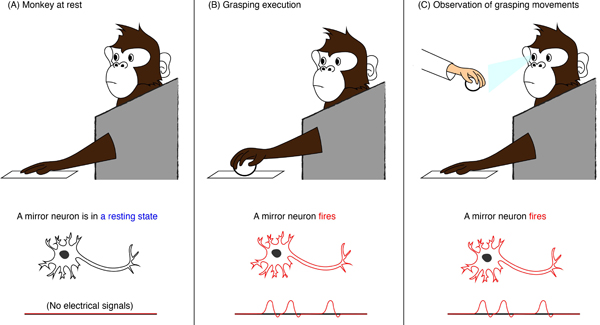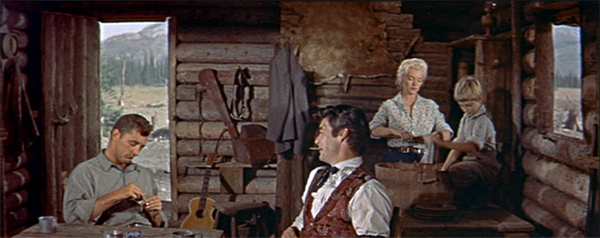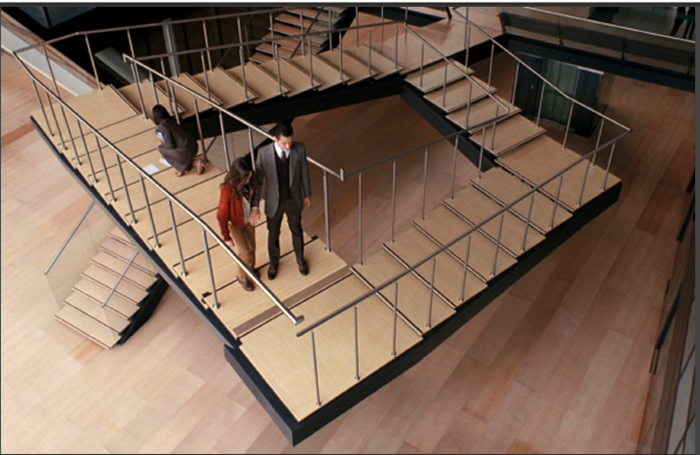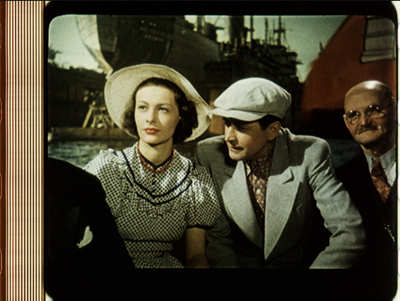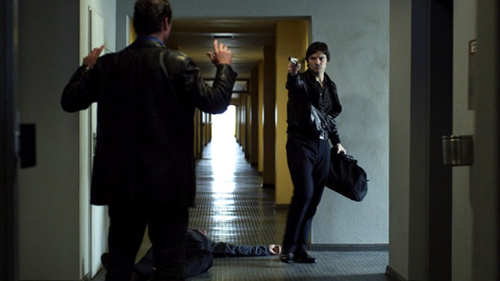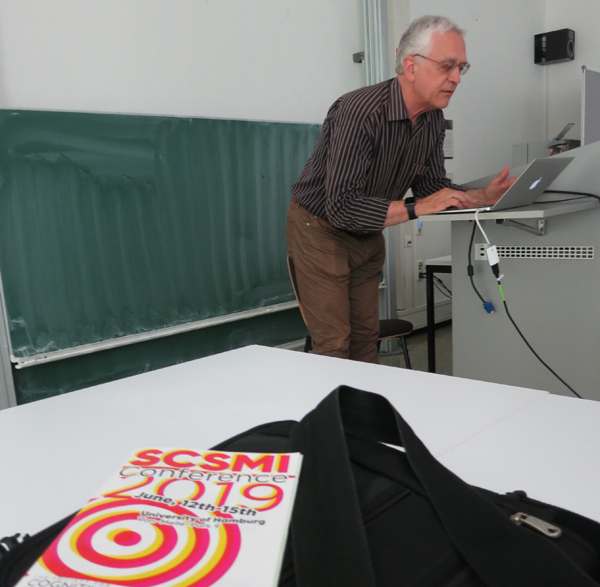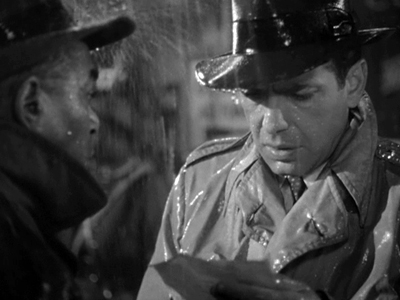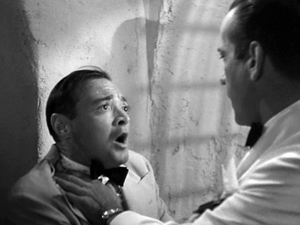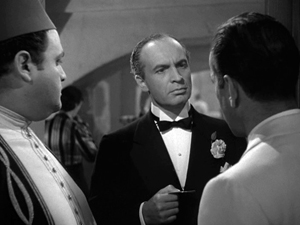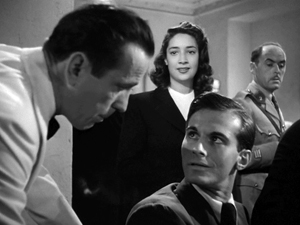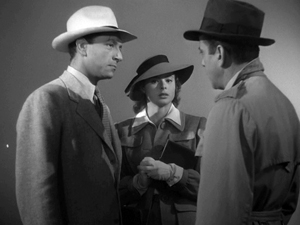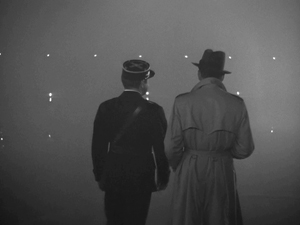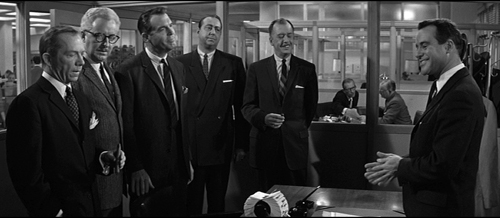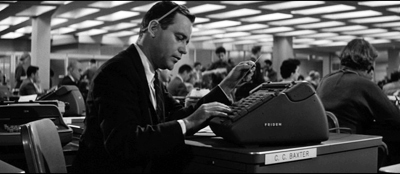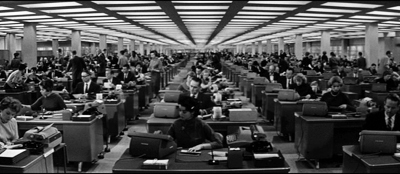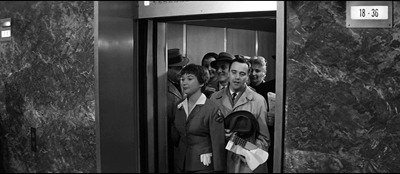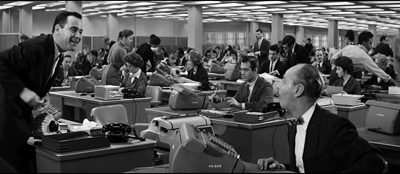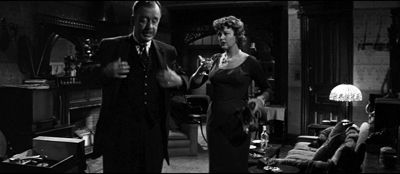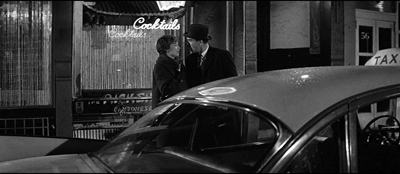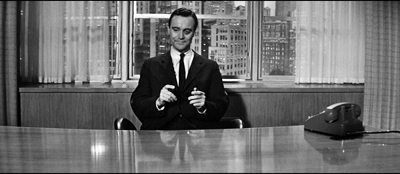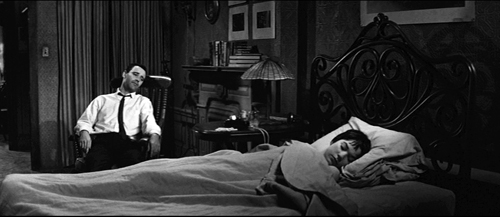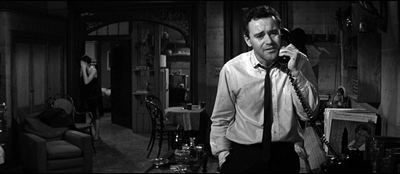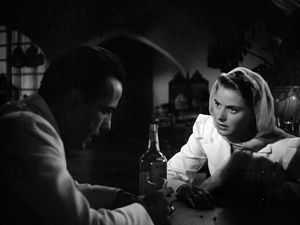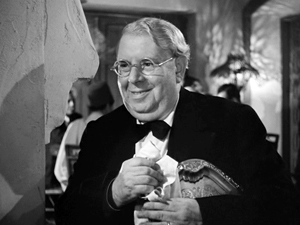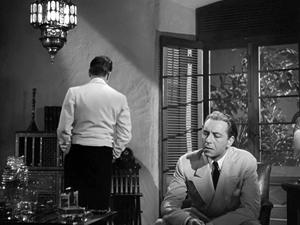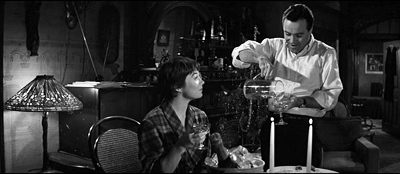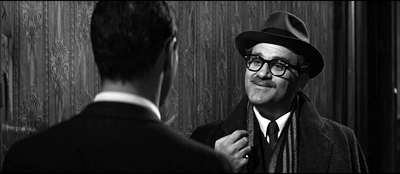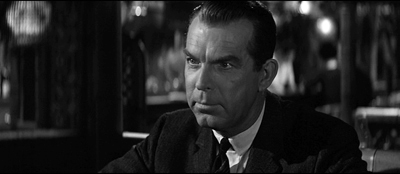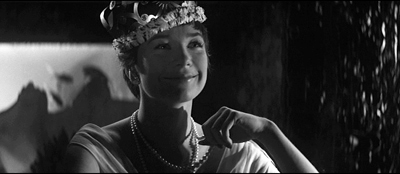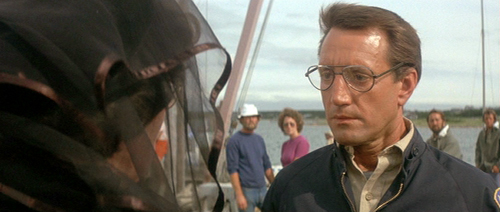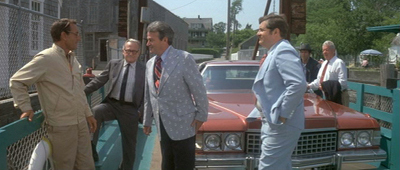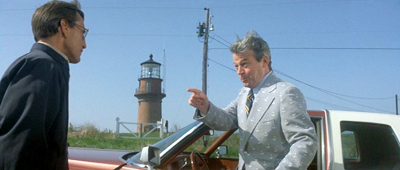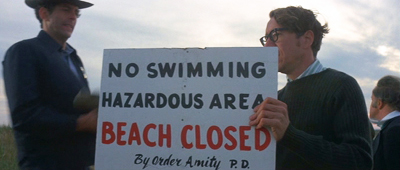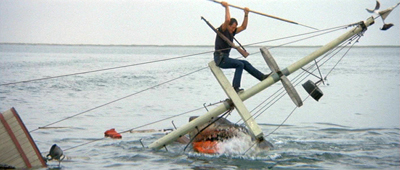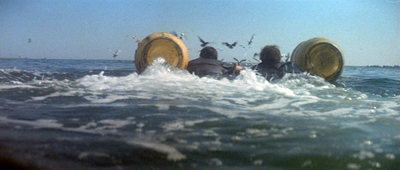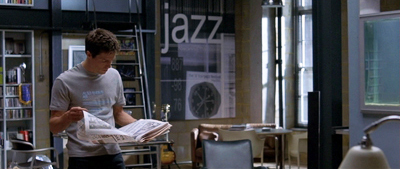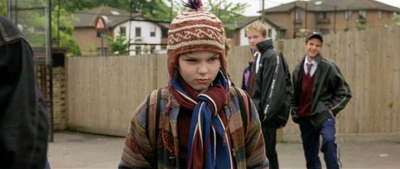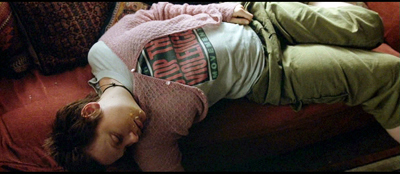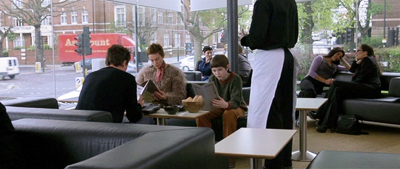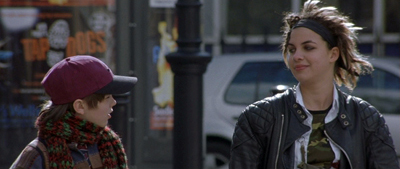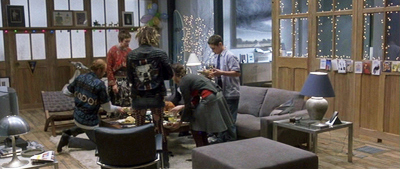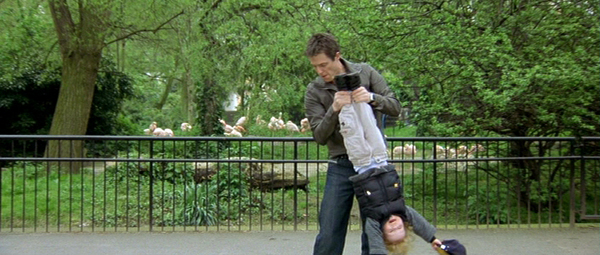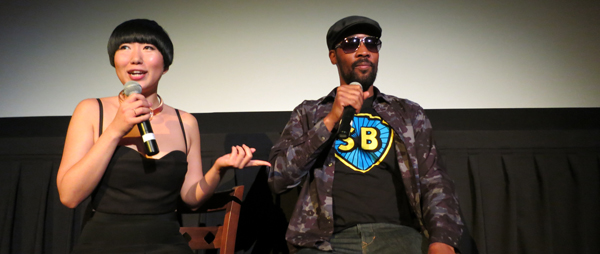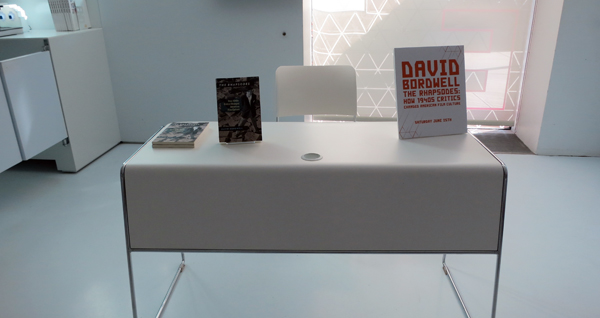Archive for the 'Society for Cognitive Studies of the Moving Image' Category
Brains, bodies, and movies: Ways of thinking about the psychology of cinema
Summer at Grandpa’s (Hou, 1984).
DB here:
This is another phantom entry I posted as Private for the seminar I’ve been teaching this term. I’ve opened it up for a wider audience because some readers have written to ask for access to the ideas. These are comments based on assigned reading for the course. Just as important, this entry serves as an introduction to a guest post coming up next week from Malcolm Turvey.
An earlier phantom entry, which considers how critics interpret a movie’s themes, intersects with this one. This is no less wonkish than that was.
The course has been an examination of the theory and practice of a particular perspective on studying film, the poetics of cinema. A poetics of any medium tries to study the principles undergirding the craft (technê) of artistic work in that medium. These principles may be explicit rules, or guidelines steering the makers’ decisions. But poetics can also reasonably try to trace how those principles and practices are designed to shape effects on perceivers. (For film, let’s call them spectators, but they of course listen as well as watch.) What are some fruitful ways to think about effects?
My initial stab at this was the bottom-up/top-down diagram of viewer activity.
To recap: As viewers we have capacities that are data-driven (bottom-up); these yield what we normally call perception. That’s already a huge range of activities, carried out mostly below the level of consciousness. (You can’t watch yourself registering color wavelengths.) In film viewing, perception runs from very fast, encapsulated, specialized, and “dumb” systems, like the phi phenomenon and apparent motion, to somewhat slower (but still fast and involuntary) ones like object recognition, speech recognition, and the like.
The top-down processes, which I called appropriation, are concept-driven, more voluntary, more deliberative, and more extensively funded by experience. A prototypical case would be judging a movie good or bad, or picking a clip to show in class. Interpretation, which I considered in this entry, is a common act of appropriation in the film-viewing community.
In the middle zone are what I called activities of comprehension. A prototypical example is following a story. It’s data-dependent (I can’t make Jackie Chan into James Bond) but it’s also concept-dependent (I can identify the conflicts and combats in a martial-arts film because they make the plot advance in a conventional manner). In non-narrative filmmaking, other comprehension skills come into play, drawing on knowledge bases, heuristics, and the like. You need some experience of art and life to follow the poetic fishing documentary Leviathan.
I wanted to allow feedback too, so the dotted lines in the middle try to suggest how comprehension can fund certain aspects of perception. We recognize Jackie Chan as likely to be the hero, and this concept helps steer our attention to him in his shots. Comprehension of course also funds appropriation, as when after grasping the film’s story we pick it apart in analysis.
One implication, already touched on in the interpretation entry, is this: As we go up from perception to appropriation, the filmmaker’s control wanes and the viewer’s control increases. Spielberg structures Raiders of the Lost Ark the way he wants, but you can appropriate his movie as a piece of imperialist ideology and he can’t do a damn thing about it. In the middle, it’s a negotiation: He steers you to construct the story a certain way, but you can also fill it out with your own inferences, or claim he hasn’t given you enough cues to do so. (Does Marion really love Indy? How much?)
And emotion is involved at all stages of the process, from the jolt of jump scares to the high-level social satisfactions of fandom.
Functions and inferences
 This model was an attempt to be naturalistic—that is, in accord with what the special sciences currently know about how viewers’ minds work—but minimally so. This is an important point. This is a functionalist account. That is, it’s largely indifferent to how the processes are manifested in physical mechanisms.
This model was an attempt to be naturalistic—that is, in accord with what the special sciences currently know about how viewers’ minds work—but minimally so. This is an important point. This is a functionalist account. That is, it’s largely indifferent to how the processes are manifested in physical mechanisms.
Think of all the vending machines you’ve encountered in your life. Each one yielded you those tasty snack treats in a predictable way, but there are different designs and materials. There are those drop-down machines that usually clamp your wrists when you try to reach into their pilfer-proof trenches. There are the little-window ones, which rotate the goodies into place (sometimes). There are even ones that use claws or turntables. And the bits and pieces can be made of plastic or metal, while the gearing and electronics and the machinery for grabbing your money (and denying your change) can be widely varied. But all in all, they have the same basic function and purpose: to take your payment and give you something deliciously unwholesome.
In the same way, my model of the spectator is agnostic about how the processes are instantiated in physical stuff. Doubtless retinas and neurons and inner ears and the nervous system are involved, but I’m not providing the details. I have no idea how to do so. Maybe we should think of the mind as having a core-periphery topography with outward-facing systems (the senses) as discrete modules picking up data while “central systems” supply the top-down treatment. Or maybe the mind is just a tangle of wetware, wires running all over the place, with “higher” functions jammed against, or crisscrossing “lower” ones.
I leave sorting all that out to the experts. But in terms of functions, I think it’s fair to say that most psychologists let the bottom-up/top-down metaphor capture distinct sorts of activities, however they are manifested in our senses, brains, and nervous systems.
More controversial is my argument that these activities are inferential in nature. This signals my commitment to New Look thinking, the early cognitive trend launched by Jerome Bruner, R. L. Gregory, Noam Chomsky et al. Computational models of mind emerged from this research. Nobody doubts that in the comprehension and appropriation phases, inferences are involved. Understanding a story or interpreting a movie as sexist clearly relies on inferences, “going beyond the information given.” The tougher controversy comes with perception.
Following Helmholtz, who believed that perception was “unconscious inference,” the information-processing perspective holds that perception is inference-like. It is defeasible. My eyes can fool me, as with mirages and the bent-looking stick in the pond. This is one reason New Look psychology is interested in illusions.
Moreover, perception operates with assumptions, just as inferences do. Many perceptual assumptions may not be learned but rather “innately specified” to some degree–that is, as presets. It seems, for instance, that we are evolutionarily “wired” to expect light to come from above. It’s also very advantageous for us to be able to separate figure from ground and tell living things from nonliving ones. These basic perceptual acts are funded not only by experience but by presets that steer us in a certain direction. No blank slate here; lots of veins and grooves. And given that we enter a structured ecosystem at birth, rich and flexible innate dispositions can be tuned to information pickup during a critical period. Babies learn fast because they’re primed to set the switches.
This perspective is usually contrasted with the view that holds that perception is “direct.” Most famously, J. J Gibson held that “the information is in the light.” Thanks to evolution and our mobility as creatures, we don’t need any elaborate inferential activity. The input is so redundant that we reliably detect the features of the environment automatically.
I think that the Embodied Cognition theorists are somewhat akin to Gibson in their belief in minimally mediated sensory pickup. Admittedly, though, as Gregory Hickok suggests in The Myth of Mirror Neurons, the Embodied Cognitivists do seem to have a computational side in treating mirror neurons as supplying “representations.” And one strain of Embodied Cognition, identified with George Lakoff and Mark Johnson, denies the inferential and computational model but still adheres to conceptual schemes (like metaphors) as representations of bodily experience. So some categorical, mediating inferences seem to play a role.
The next section discusses how New Look thinking can help us understand visual arts. My comments target two essays in the 1973 collection Illusion and Nature and Art: R. L. Gregeory’s “The Confounded Eye” and E. H. Gombrich’s “Illusion and Art.”
Gregory, Gombrich, and art
The Penrose steps.
New Look psychologist Sir Richard Gregory (lower right) was a passionate connoisseur of illusions like the Penrose stairsteps. He was famous for pushing the cognitive model of inference-making very far, deep into the basics of perception. He saw perceptions as the usually reliable results of assumptions and hypotheses, in a process significantly similar to what scientists do when they launch hypotheses and check for confirmation. For a career overview, go here.
I take it that he’s trying to answer the question: What perceptual processes generate visual illusions? We evolved to pick up accurate information from the environment, and normally our perception is accurate. The obvious problem with illusions is that they yield false information. What has fooled our eye?
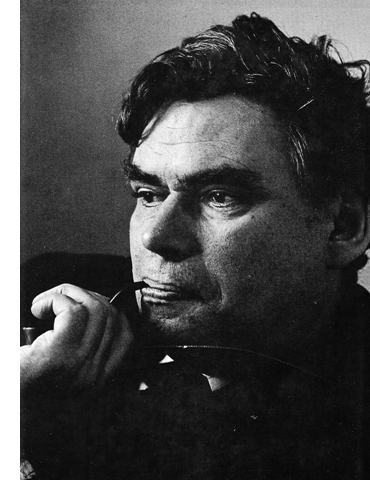 Gregory’s essay “The Confounded Eye” offers a detailed set of explanations, divided between mechanism failures and misplaced strategies. In cinema, a clear mechanism failure would be apparent motion. Movies trade on a failure of our visual system to detect single frames that are still images. As we didn’t evolve to watch movies, and as we don’t encounter this sort of intermittent illusory motion in a state of nature, inventors found a way to trick our eye and create the impression of movement.
Gregory’s essay “The Confounded Eye” offers a detailed set of explanations, divided between mechanism failures and misplaced strategies. In cinema, a clear mechanism failure would be apparent motion. Movies trade on a failure of our visual system to detect single frames that are still images. As we didn’t evolve to watch movies, and as we don’t encounter this sort of intermittent illusory motion in a state of nature, inventors found a way to trick our eye and create the impression of movement.
As for perceptual strategies, perhaps in film we could cite special effects and green-screen backgrounds, where perspective, lighting, focus and so on are calculated to suggest space that isn’t really in front of the camera. Our visual system assumes regularities of space that aren’t justified; we usually can’t force ourselves to see these backgrounds as flat.
Some controversies dog Gregory’s theory, chiefly in his reliance on prior experience. He thinks that even pretty low-level outputs depend on knowledge of some sort, if only about our world of discrete edges and solid shapes. He doesn’t seem to treat evolution as shaping many of our perceptual proclivities. In this essay “The Confounded Eye,” he appeals to classical conditioning (p. 66) to get the system off the ground.
But crucial are the ideas we also find in the work of E. H. Gombrich. Gregory assumes an active perceiver, one who takes fragmentary stimuli as cues for building up a perceptual conclusion, through a process of hypothesis-testing. Expectation, assumptions, and probabilities all play a role. Perception is inferential because it can be wrong.
In addition, Gregory reminds us of the importance of habituation (sometimes confusingly called “adaptation”). This means simply resetting the threshold of your sensory input. At first the coffee shop seems noisy, but soon enough you’re paying no attention to it and completely sensitive to your partner’s whisper. People can even adjust to wearing eyeglasses that turn the world upside down! Habituation is perhaps the most robust finding in all of psychology—and something that, when it becomes all-powerful, Victor Shklovsky deplores. (“Habitualization devours works, clothes, furniture, one’s wife, and the fear of war.”)
Gregory’s last book, the cleverly titled Seeing through Illusions (2009), published a year before his death, is a detailed expansion of these ideas. He classifies dozens of illusions according to a richer scheme than the one laid out in his 1973 article.
There’s a lot more in Gregory’s essay, not least the homunculus argument which has been broached against a lot of cognitive theorizing (mine included). But now let’s look at Gombrich’s essay “Illusion and Art.” He was a friend of Gregory’s and he borrowed heavily from New Look psychology.
Despite the book’s title, Gombrich’s magnum opus Art and Illusion doesn’t center on illusion as such. In trying to answer the question Why does [European representational] art have a history? he had to confront “illusionistic” styles, but that issue was secondary to the larger issue of continuity and change in representational traditions. So with an essay called “Illusion and Art,” Gombrich offers a more explicit and careful account of illusion.
I take it that his guiding research question is something like How may we explain the artistic and psychological processes that generate illusion in the visual arts? Not surprisingly, he will make use of some of Gregory’s ideas.
What seem to me crucial here are Gombrich’s reflections on animal perception. Far more than in A & I, he posits a continuum of sensory appeals and so a sort of spectrum of degrees of illusion. To a considerable degree, he has turned my vertical diagram into a horizontal one.
There are automatic, involuntary processes he calls “sensory triggers.” Moving along the spectrum, there are more elaborate strategies for conjuring up illusion, but these will rely on more deliberative processes. Throughout, we never lose the sense that we are watching a representation, however realistic it looks.
Moreover, Gombrich attributes the fast and mandatory illusions, the ones Plato called “lower reaches of the soul,” to evolution. He posits that just like other creatures, we have sensory systems that respond to “triggers” automatically, and sometimes we can be deceived–as predators are fooled by the camouflage of their prey.
So what about illusions? At one end is pure delusion, as with say counterfeit money. Trompe l’oeil is a little further along; you really have to get close to detect the difference. Flat objects, like letters tacked to a board, are good for this trickery, as are fictitious postage stamps like those of Donald Evans.
These cues are very realistic, but crucially the trigger need not be a close replica of what it represents. Approximation can work. The duckling can follow a moving brown box if it moseys like its mother; the box doesn’t look like Mom, it just triggers the Mom-response. Stickleback fish will strike a red cloth that doesn’t look much like another fish’s belly–except in being a moving patch of red. Recall as well the Frog Multiplex. These critters are slaves to innate “action programs.”
A flat, impoverished display of a wiggling worm is enough to get the right (wrong) reaction. And note a fascinating Gombrich example, Houdon’s bust of Voltaire, where the sparkle in the eye is actually a tiny lump protruding from the surface. You couldn’t get farther from a non-realistic device for depicting a gleam of light.
Hence a typical Gombrich formulation: What matters most is stimulation, not simulation. Images at whatever degree of realism rely on key features that trigger our automatic systems. The big transaction isn’t resemblance. The link is not between image and object but between the activities involved in processing the image and those processing the object. The image has hitched a free ride on perceptual habits, or faults, that we already have and cannot always see beyond.
Further along the spectrum, our response can be more flexible, less data-driven. We can learn to control and use the illusion, appreciating it. We can consciously factor in context, prior experience, interpretative possibilities. We can shift mental sets and adjust our expectations, we can test projections by trial and error. We’re now in my realms of comprehension and appropriation–comparatively self-conscious film experiences. But we couldn’t go so far and wide without anchoring our response in the fast, mandatory “lower reaches of the soul,” whose powers derive from evolution.
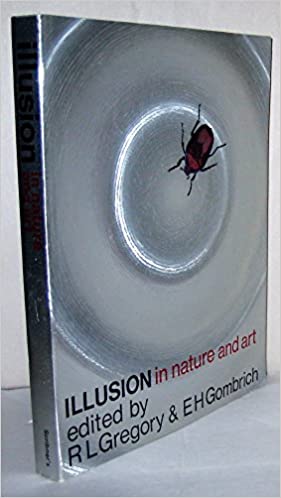 You can see how all this fits Gregory’s hypothesis-testing account of shape perception and object identification. We are already expecting to see something, either because of prior experience or some wayback presets. We don’t need much of a cue to lock in a grasp of what’s there–even if it turns out not to be really there. That’s the case with “phantom percepts,” those imaginary objects that mimes conjure up.
You can see how all this fits Gregory’s hypothesis-testing account of shape perception and object identification. We are already expecting to see something, either because of prior experience or some wayback presets. We don’t need much of a cue to lock in a grasp of what’s there–even if it turns out not to be really there. That’s the case with “phantom percepts,” those imaginary objects that mimes conjure up.
Gombrich’s essay also emphasizes time more than Art and Illusion had. The sequential nature of perceptual activity–scanning an image–doesn’t occupy him much, but I think it’s quite important. I’ll give an example later on. But he’s right to stress the pressure of time in an evolutionary context. Fight-or-flight decisions have to be made fast, and so creatures with oversensitive mechanisms had a better chance of surviving, even if they sometimes wasted effort in avoiding harmless things. This time dimension takes Gombrich to movies, of course, as well as to flight simulators.
The last main point I’d stress is Gombrich’s insistence that we’re always after meaning. In Art and Illusion he proposes that we never see space as such, but rather medium-size objects in an environment. Representing “space” is tough, but people can provide convincing information about the spatial layout of people, places, and things. Mapmakers do it, technical illustrators do it, we make stabs at it, and painters do it with precision, delicacy, and force. Ditto textures, lighting, and other features of the world.
The “effort after meaning” flows from the inferential, seeking nature of perception. In a memorable formulation Gombrich says we don’t see people’s eyes as such: “We see them looking.” We are geared to meaningful objects, actions, and implications, not purely physical metrics. Again, this makes evolutionary sense. Creatures who focus on measuring the distance between a tiger’s eyes aren’t going to leave as many offspring as creatures sensitive to gaze direction and threatening sounds.
Perceptual psychologists will debate whether the New Look/inferential model or the Direct Perception model of Gibson et al. is better for explaining real-life perception. But as my concerns are in studying art, particularly cinema, I think the inferential perspective is better suited to analyze what concerns me. For one thing, it grants that grasping art is active and skilled, something that I think we all acknowledge. Your and my skills of noticing, understanding, and responding complement the skills of the ‘poet’ or maker. We complete the artwork.
Moreover, artworks offer simplified, streamlined displays very different from the blooming, buzzing confusion of the world. Gibson’s perceiver has to hack through a lot of distractions to extract the texture gradients and optical flow that will specify the layout. Art works already do that for us. Art works, films included, are designed with precision to trip our inferential engines at all levels. As a result, an inferential model tracks more closely the critical analysis we want to conduct on films. I’ll try to give two examples at the end.
A personal detour: Monkey see, David do
The Chinese Feast (Tsui Hark, 1995).
In the 1980s, as I was studying narrative and style in Hollywood films, I was struck by the ways in which the films’ designs seemed to aim for particular responses from spectators. I wondered whether the norms in place were coaxing us to perform particular mental acts: assuming, trusting, hypothesizing, anticipating, and so on. A lot of what we see and hear in a film sets up “intrinsic norms” that in effect teach us how to comprehend the story.
This led me to float an approach to spectatorship based on then-current premises of cognitive psychology. I tried to work it out in Narration in the Fiction Film (1985) and later work. Other researchers found this intriguing (to use a Kristin word) and developed well beyond it. Over the years an entire subfield emerged, with its own journal, conferences, and academic network.
The psychological findings I found most useful for my research questions were rather robust, well-confirmed ones involving informal reasoning: the use of schemas, heuristics (quick and dirty inferential routines), prototypes, and other concepts. I call these findings robust because they’re fairly well-replicated phenomena that different theoretical paradigms have tried to explain. They’re especially useful tools for us as students of the arts, for they bear directly on matters of narrative–plot, characterization, causal connections, and the like. They map fairly comfortably onto our analytical categories.
The broad point is that just as visual illusions exploit deficits in our visual system, narrative often plays to biases and shortcuts in more elaborated inferences. We’re good at tracking cause and effect, but the principles we use are “folk psychology,” not the principles of physics. In real life, we may attribute Oscar’s grumpiness to his just having a bad day, but Oscar is a film character and is introduced to us grumpy, we’re inclined to take him as a permanent grouch. (This is called the fundamental attribution error.) This example also trades on the primacy effect, also known as anchoring, which lets the first instance we encounter shape our pickup of information encountered later.
A prime instance of a robust finding was research into eye-tracking.
Film theorists have long considered that attention is central to filmic effects. Once eye-tracking devices became easy to use, researchers could use them to study how people scanned movie images. The pioneering work here was done by Tim Smith. I survey the research program here, and Tim did a powerful guest blog to follow up. His entry, probably the most popular post we ever had, earned him press coverage and a guest visit to film companies to present his research!
For more discussion of these middle-level findings, you can see this reader-friendly version.
Many of these activities are accessible to us, if only in retrospect. In following a narrative, if we pause the movie, we can think about what we’ve noticed and what we expect. As the years went by, though, I began to realize that probably a lot of what engaged us in films wasn’t so easy to tap consciously. Plato’s “lower reaches of the soul” invoked by Gombrich played an important role.
So in the 2000s, when research into mirror neurons was emerging, I drew two lessons. One was that certain primates could respond to film images much as we do–recognize objects, track movements, and so on. I thought, and still think, that this is an exciting piece of information. What was methodology for the researchers is a substantive finding for us. If macaques can recognize what a movie shows, it’s hard to argue that pickup depends on cultural codes.
Second, I thought that the prospect of mirror neurons held promise for carrying inference/computation down into the wiring level. Given all the presets supplied by evolution, isn’t it conceivable that social primates may have evolved to “resonate” to actions, expressions, and even emotions displayed by their conspecifics? It would be another part of a natural endowment that, suitably tuned by the social environment during the critical period of growth, could bootstrap a broader set of skills–such as following stories.
Hence the remarks I made in my 2008 “Poetics of Cinema” essay, where I took the view that “it seems we have a powerful, dedicated system moving swiftly from the perception of action to empathic mind-reading.”
Fairly soon mirror neurons became absorbed into a larger trend toward neuroscientific examination of film viewing. I’m not sufficiently expert to appraise that work, but I do have thoughts about what it can, and can’t, tell us about understanding film.
Mirror, mirror in your head
As I understand it, the Embodied Cognition research program aims to answer this sort of question: What role do automatic, low-level visual processes play in enabling spectators to respond to film? More specifically, do the processes enable us to understand and empathize with action, agents’ intentions, and agents’ emotional states? I think that the general answer proposed is yes.
Mirror neurons play a role in this process. They were first discovered in macaque monkeys, and there is some evidence that they exist in humans. The hypothesis is that when we see a piece of action, in life or in cinema, we spontaneously mimic, in the pattern of cell firings in our brain tissue, the sensory and motor processes that create it. Our brain mimics or “resonates with” the action we perceive. We don’t just “understand” that the man is lifting a glass; in a weakened form we are repeating the experience of his doing so. Of course we may not be holding a glass, but to a degree the sensory and motor cells in our brain tissue rehearse the lifting gesture. Because we’ve executed similar actions, the cell firings are marked out through electrochemical patterns.
This argument takes us into the specialized areas of brain science. A useful account of the general scientific debate is here. The appended articles quickly turn technical, though. An easier read is this piece in Wired. For film, the fullest account of this view is provided by Vittorio Gallese and Michele Guerra in their recent book, The Empathic Screen: Cinema and Neuroscience.
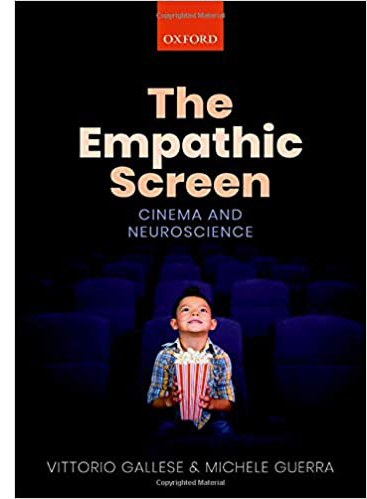 The reach of Gallese and Guerra’s theory is quite ambitious. They want to explain our understanding of actions (and “from the inside”), our “immersion” in a film, our ascribing intentions to agents, and our “identifying” with or empathizing with those agents.
The reach of Gallese and Guerra’s theory is quite ambitious. They want to explain our understanding of actions (and “from the inside”), our “immersion” in a film, our ascribing intentions to agents, and our “identifying” with or empathizing with those agents.
In our next blog entry, a guest post, Malcolm Turvey will offer an analysis and critique of that book’s arguments. As a pendant to that, I’m just going to signal my reservations about the project and its results. In the last section of this entry I also want to make a point that Malcolm will explore conceptually: How much specificity does a “psychology of cinema” need for us to say useful and unusual things about film?
My first general comment: What the authors mean by understanding, or “involvement,” or the “from the inside” part of experience could do with more specifying. Malcolm will explore this question in detail. In addition, I wonder whether concepts like “identification” and “immersion” fruitfully characterize our engagement with all films, or even those we find exciting.
Camera movement occupies a privileged place in Gallese and Guerra’s scheme. “The involvement of the average spectator is directly proportional to the intensity of camera movements.” Yet what about the first thirty years of cinema, in which camera movement is quite rare? Tableau cinema, as discussed in many entries hereabouts, was presumably quite effective in moving audiences. If camera movement automatically steps up engagement, why didn’t it become more common sooner? And are we talking only about camera movements forward, which are the privileged examples cited from Notorious, The Spiral Staircase, and other 1940s films?
The only effects of the nonmoving camera noted by Gallese and Guerra are expressive ones. “In the absence of movement the editing and arrangement of figures and spaces within a shot can produce a feeling of oppression.” Well, editing and staging within a fixed shot can indeed produce that effect, as we see in Antonioni, but it need not. This makes especially curious the authors’ claim that Dreyer’s La Passion of Jeanne d’Arc, with its close-ups, is a static film evoking through editing “the violent shades of power and persecution.” But of course from start to finish Jeanne d’Arc contains many camera movements.
And are we to assume a “progressivist” conception of history, so that the Steadicam is a step toward “better” (=more engaging) filmmaking? Would all those spectators aroused by crosscut last-minute rescues, from Griffith to Black Panther, have been even more carried away if there had been more camera movements?
Gallese and Guerra don’t assert that every shot would be improved, immersion-wise, by adding camera movement. We also need, they claim, more calm and stable orienting shots so that camera movements can create “peak moments” for maximum impact. Yet, to revert to their favorite director, Hitchcock created quite a peak moment in a certain shower scene wholly through editing. Again, would a flurry of camera movements have made it even more visceral? In fact, the leave-taking camera movement that ends this scene serves as the calm after the perceptual onslaught of cuts.
Of course Gallese and Guerra realize that camera movements aren’t the be-all and end-all of cinematic technique. Yet their discussion of editing seems to me rather unrevealing. Their experiment in varying camera angle through cutting yields the conclusions that “we use the same processes that we employ in our visual perception of the real world” and that our brains register violations of continuity rules to some degree. I am not surprised, though it’s good to have confirmation.
Malcolm will take up several other areas of inquiry in his followup entry. I want to end with a couple of examples to set us thinking about the difference between the neuroscientific arguments and those from a poetics perspective. Here’s a chance to weigh research questions against one another, to see the sort of ideas and information each can yield.
Direction and misdirection: Delicacy via precision
Let’s ask a poetics-weighted question: How can viewers understand the construction of shots designed for perceptual force and narrative comprehension? At the least, we should expect that the pictorial design will solicit attention and emphasis. Deploying these ideas enables us to talk about deflected attention and gradation of emphasis. And we need not assume that the camera is a surrogate for us.
In Summer at Grandpa’s, Hou Hsiao-hsien gives us a somewhat episodic tale of kids sent to live with their grandparents while their mother is hospitalized. In the village they play with the local children and have minor brushups with their stiff grandfather. They’re exposed to aspects of life and death that the modern city has shielded them from. One of those is a madwoman who wanders through the countryside keening.
The boys won’t play with the little girl Ting Ting. So, bearing the toy fan she always carries, she wanders to the railroad tracks and stumbles in the path of a train.
The madwoman’s rescue of Ting Ting is a harrowing, gripping moment. (No need to be energized by camera movement.) The pounding rush of the train, very loud, is an assault on us. The narrowness of her escape is emphasized by glimpses of the two huddling on the other side of the tracks. No need for camera movement to amp up this jolting moment.
But Hou has introduced something else, the fallen fan that tips over and just barely escapes being crushed by the train wheels. Its childishness–pink and orange and green, tipped over by the rush of the wheels–is a kind of stand-in for Ting Ting. It also, by virtue of color and the absence of anything else to look at, rivets our attention.
No less striking is this: When the train has passed, the fan’s blades reverse direction and spin the other way! This tiny bit of movement, visible on a big screen if not here in miniature, provides a kind of coda for the shocking action. This exemplifies, for me, Gombrich’s “visual discovery through art.” We see wind power in miniature, in a natural experiment in the sheer physics of a situation.
All of which proceeds from careful craft decisions. Hou has stretched the norms of framing and staging in fresh ways to achieve a powerful effect. Nothing I see in the mirror-neurons story could address, much less functionally explain, what’s on display here.
Similarly, the Embodied Cognitivist position seems to me too coarse-grained to capture the rather different range of artistic effects in a sequence from River of No Return. Matt Calder and his son Mark help rescue Kay and Harry from their clumsy efforts to raft their way to town. Preminger films the rescue in shots that exploit the CinemaScope ratio. Many critics have noticed how Kay’s wicker trunk of clothes falls into the current and remains visible far into the distance as the dialogue in the foreground develops.
Since the arc of Kay’s character traces the gradual stripping away of her past life as a dance-hall entertainer, this phase of her change is made visible in a soft-pedaled way. Attention and emphasis are played down. Preminger prepares us to watch for secondary and tertiary areas of importance–what Charles Barr has called gradations of emphasis. Alert viewers may notice the drifting basket, others not, but for those who do some inferences will be forthcoming. For one thing, What might be the significance of this basket?
Turns out that this was practice for using our eyes. Having prepped us at the riverside, Preminger again plays with graded emphasis. Before the rescue scene, Matt and Mark share coffee before going out for target practice.
Few of us will notice the rifle in its long holster there on the back wall until Matt takes it down.
Now compare this later scene.
Sparse as it looks, the main shot is busy. The men were decoys but the holster was waiting there to be used at just the right moment. We could have noticed it at any time. Maybe some folks did.
When the rifle pokes into the shot, stressed by Harry’s line, it probably surprises us. But those of us who may have noticed the empty holster earlier may experience suspense rather than surprise: Where did the gun go? We have to wait and see.
This sort of multilayered visual effect seems to lie beyond the sort of responses that G & G attribute to aggressive camera movements. We may not be “immersed,” but we are definitely engaged–albeit coolly. The image is a visual display we search, not a space we imagine ourselves interacting with.
You may say that this sequence is so atypical it’s unfair to use it as a counterexample. But I think it’s just an extreme instance of what filmmakers are doing all the time. Preminger uses classic cues: the holster is isolated, it’s sitting near the center of the picture format, and it’s well-lit. On the big screen in a 1954 movie house, it would be very evident, in principle. And we’ve seen it used before in a very similar camera setup.
But Preminger has steered us away from what’s important by creating competing centers of attention. There are the men’s faces and gestures, the words spoken the dynamically unfolding drama, the woman and the boy executing repetitive actions (what Gombrich in Art and Illusion calls the “etc.,” take-as-read principle). Attention and emphasis are led by lines of least resistance; you’d have to be pretty stubborn to study that holster.
Of course there is a neurological story behind attention and eye tracking. And perhaps Matt’s gesture of reaching and seizing the rifle may “resonate” with our neural circuitry. But for the artistic effect Preminger prompts, it’s surely less salient than our acts of following, scanning, noticing, and registering all that’s going on in this misleadingly muted visual, auditory, and dramatic array. Our neural circuitry isn’t available to us for inspection, but we can bring to awareness the way that directors direct–direct our attention, weight various areas of the shot–usually to supply information, sometimes to suppress it.
In bringing this scene’s constant flow of information and withholding to light, we’re homing in on an uncommon but precise craft decision that has distinct artistic effects on us. This is, I think, an instance of analytical poetics–analyzing a particular film by using the norms and practices we reconstruct on the basis of historical research.
I lay my cards on the table. If our research question asks about the fine-grained principles of cinematic craft, its creation and consequences, its norms and options, we are likely to have little need for generalizations about how all traveling shots may mimic cell firings. Functional explanations can be enlightening when we don’t know about the mechanics. We can attend to precise, often delicate, effects as results of weighted choices from a historically available menu of options. After all, artists are achieving these effects in other media. Even if neuroscientists don’t care about these things, filmmakers do. We should.
So much other bibliography I could suggest! Good introductory overviews are Michael Morgan, The Space between Our Ears: How he Brain Represents Visual Space (2003) and Jennifer M. Groh, Making Space: How the Brain Knows Where Things Are (2014). Both have clear, nontechnical accounts of fascinating experiments. More advanced, but a trailblazing study, is Jerry Fodor’s The Modularity of Mind (1983), a fun read.
I hijack the Frog Multiplex for a discussion of cinematic coding. For more on gradation of emphasis, see this long-ago entry in homage to Charles Barr. I discuss ‘Scope aesthetics from the standpoint of poetics in this online video. I consider Hou’s staging strategies in my book, Figures Traced in Light.
During the current health crisis, Berghahn has made all issues of Projections: The Journal of Movies and Mind freely available. Several articles over the years debate issues around cognitive film theory and brain-based explanations of media effects. My version of cognitivism is discussed in the June 2016 issue. For still more, there’s this web essay and this broad overview.
Inception (2010).
Cognitive film studies: The Hamburg Variations
Lobby, Von-Melle-Park 9, Universität Hamburg, with Murray Smith.
DB here:
How many universities in the US would post a big quotation from Karl Marx in the lobby of a classroom building? (Answer: None.) But a cartoonish rendition of Marx’s killer app–the task of philosophy being not only to understand the world but also to change it–greeted the one hundred or so scholars attending the latest conference of the Society for Cognitive Studies of the Moving Image last week at the Universität Hamburg.
How much we’ll change the world remains to be seen. What is clear now is that thanks to the superb organization of Kathrin Fahlenbach, Maike S. Reinerth, and their team, the SCSMI had a lively four days of papers, discussions, and excursions–as well as a screening of a strong film by a skillful director previously unknown to me. In all, every good reason to go to a conference.
Big questions, candidate answers
Carl Plantinga, Dirk Eitzen, and Kathrin Fahlenbach on the Hamburg Harbor cruise.
The range was huge, as usual, because this is a very diverse group. Our community, as I’ve mentioned in earlier reports, hosts film scholars, scholars of other media (television, games, internet), psychologists, and philosophers. Recurring questions include: How do viewers comprehend media presentations? What is the role of morality in film and television? How do practitioners conceive their craft? How do media present and trigger emotions? What appeals are specific to certain genres or historical periods? Not least: How may we construct good theories to answer such questions?
Three sessions ran simultaneously at each time slot, so I missed many good presentations. Kristin and I occasionally doubled up. Many of the talks will eventually become published papers, several in the Society’s journal Projections, so let me just highlight a few strands.
For those of us interested in how style interacts with narrative, there were several significant presentations. James Cutting, who has pioneered the use of Big Data techniques in scanning large batches of films, provided a compact account of how “sequences” (as opposed to scenes) displayed patterns of coherence and grouping. Karen Pearlman discussed her films, and James examined them to reveal fractal patterns in their rhythms–patterns that match the dynamics of footsteps, heartbeats, and breathing.
Two papers added to our understanding of the Kuleshov effect, much discussed on this site. Marta Calbi and her collaborators conducted EEG testing on spectators exposed to a Kuleshovian film scene, while Anna Kolesnikov, another member of the team, traced the contradictory versions of the “experiments” that Kuleshov and his students purportedly constructed. Both were exciting contributions to our understanding of Kuleshov’s legacy, which as the years go by looks more complex than we had thought.
Other papers on visual style included Barbara Flückiger’s tour of the staggering resource she and her colleagues have devoted to the history of color in film–a database of images from 400 films illustrating a range of technologies, periods, and genres. She has also mounted a magnificent array of tools for detailed analysis of color. (Significantly, she has taken the images from film prints, not video copies.) Here’s one of several stunning images she has taken from Helmut Käutner’s Grosse Freiheit Nr. 7 (1944, Agfa nitrate).
Stephen Prince, whose book Digital Cinema has just been published, surveyed the emergence of “deep fakes,” manipulated images that have no basis in reality but which are indiscernible from an accurate image. Steve was once skeptical that digital images would ever cut us off entirely from photographic reality, but now machine learning has managed to do it. Sped up by social media, the rise of unverifiable “records” creates what he called “an attack on an information system we call society.”
Hitchcock, everybody’s idea of a shrewd filmmaker (when will cognitivists discover Lang?), came in for his usual close treatment. Todd Berliner proposed five ways in which story information can be set up and paid off in a narrative, and he used Psycho as an instance of at least four of those methods. Maria Belodubrovskaya countered Hitchcock’s constant claim that he relied on suspense and not surprise. She showed that both single sequences and overall plots (e.g., Suspicion, Psycho) were heavily dependent on surprise effects.
In the first day, the range of the “humanistic” side of SCSMI was on vivid display. Malcolm Turvey asked whether the give and take of philosophers’ arguments converged on a consensus about truth, the way that much of science progresses. To illustrate the process, he considered the return of an “illusion” theory of images put forth by Robert Hopkins. Later that day, Jeff Smith used the cognitive theory of confirmation bias to show how characters in Spike Lee’s Clockers systematically misunderstand the story situation. The result, enhanced by genre conventions and a violation of some traditions of the detective story, enmeshes the viewer in the same error.
On the other end of the spectrum, there were papers mobilizing empirical research. Timothy Justus drew upon Lisa Feldman’s work in How Emotions Are Made to suggest that a biocultural account of facial expression should not rely too strongly on Paul Ekman’s classic argument about universal, basic expressions. More room, Justus proposed, should be given to cultural forces that build “emotion concepts” that filmmakers and viewers draw on.
A more hands-on empirical project was that coming from a team at Aarhus university. Jens Kjeldgaard-Christiansen posed the question: What if sympathy for a film’s villain varies with the personality of the spectator? As he put it, “If you are like a villain, will you like a villain?” So via Amazon’s Mechanical Turk the team ran questionnaires testing how personality types matched tastes in villains. Not to spoil their public announcement, I’ll just say that the results seem to confirm the belief that the most dangerous creatures on earth are young human males.
There was a lot more here than I can report, including provocative keynote addresses from Professors Anne Bartsch and Cornelia Müller (presenting work done with Hermann Kappelhoff). There was also a moving tribute to Torben Grodal, a central force in SCSMI and a leading-edge theorist applying evolutionary psychology and embodiment theory to traditional genre studies.
And, since SCSMI wants to understand how creators create, there was a film and its maker.
Without bullshit
In the past, our conferences have featured Lars von Trier and Béla Tarr, talking with us about their work. This time the guest was Thomas Arslan, a prominent “Berlin-school” director, who brought his 2010 film In the Shadows (Im Schatten) to the lovely Cinema Metropolis.
The film is a dry, hard-edged crime exercise. Trojan, fresh out of prison, comes to his boss to claim his share of the loot. In a tense confrontation he manages to get some of what he’s owed, but he’s now a target for elimination. He searches for a new robbery scheme and settles on the heist of an armored car. As usual, things don’t go as planned, particularly due to the intervention of a crooked cop.
Shot in a laconic style, In the Shadows took advantage of the Red One camera to produce remarkable depth in dark surroundings. (We saw it as a print because in 2010 theatres weren’t quite ready to show digital files. The print looked fine.) The drab locations complemented the anti-psychological impact of the story. Characters barely speak, the music is spare and almost subliminal, and the framing doesn’t accentuate the action expressively. In his post-film discussion, Arslan explained that the style grew out of the small budget and the rapid schedule. The result was a sort of modern B-film, avoiding the excess of CinemaScope and explosive chase sequences.
Arslan refuses to glamorize his gangsters, but he summons up sympathy for Trojan by minimal means. The protagonist is a solid, efficient professional, and he’s loyal to his boss until he realizes he’ll be betrayed. And as Hollywood screenwriters would remind us, you can sympathize with someone who’s been treated unfairly. I liked the unfussy handling of the story; it was a bit reminiscent of Rudolf Thome’s bare-bones Detective (1968). Arslan would be a good director to shoot a Richard Stark noir. “He does it without bullshit,” Arslan said of his thieving protagonist. It’s a good description of Arslan’s own technique.
SCSMI continues its tradition of merging humanistic inquiry with findings from empirical science. We can fruitfully ask questions that cut across traditional boundaries if we ground those questions in clear concepts and solid evidence. Our gathering next year moves back to the States–Grand Rapids, no less. More fun on the way.
Go here for earlier years’ coverage of SCSMI conferences.
On Richard Stark noir novels, see here and here. In the Shadows would fit nicely into my discussion of conventions of the heist film.
My own SCSMI contributions were two: a tribute to Torben Grodal and a little talk on contemporary women’s domestic thrillers (Gone Girl, The Girl on the Train, etc.). I may post the latter as a video lecture later this summer.
James Cutting lecturing at the SCSMI conference.
Rethinking the character arc: A guest post by Rory Kelly
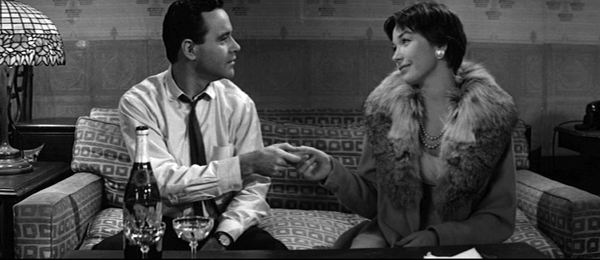
The Apartment (1960).
DB here:
Rory Kelly, whom I met some years ago at a conference of the Society for Cognitive Studies of the Moving Image, has been a pioneer in linking the practices of film production to larger issues of narrative, performance, and artistic form. What follows is a version of a superb paper he gave at the Society’s annual meeting in Ithaca in June. Since Kristin and I are always eager to know how practitioners think of their craft, we jumped at the chance to pass along his thoughts in one of our guest blog entries.
Rory comes fully prepared to the task. Currently an Assistant Professor in the Production/Directing Program at UCLA, he has been a bright light in filmmaking for many years. His first feature, Sleep with Me (1994) premiered as an Official Selection at Cannes and was released by MGM/UA. His second feature, Some Girl (1998), garnered him the DGA-sponsored Best Director Award at the Los Angeles Film Festival, and his 2006 short, The Women, premiered at the Long Island Film Festival. He was also co-executive producer of mtvU’s Sucks Less with Kevin Smith. Rory has been a Film Independent Screenwriting Fellow and is currently working on several research projects, including studies of discourse analysis and emotional expression in film. At the same time, thanks to a 2016-2017 Heillman Fellowship, he is preparing a feature documentary about racism in America, To Someday Understand.
Here’s Rory on a perennial problem of the screenwriter: the character arc.
Since the 1960s, the character arc has become all but obligatory in Hollywood movies. Genres like sci-fi and horror, once largely unconcerned with character change, now often include it. Compare, for example, the 1953 version of War of the Worlds with Steven Spielberg’s 2005 remake. In the latter the alien invaders are not only defeated, but in the process Tom Cruise’s character, Ray Ferrier, becomes a better father.
Why has character change become so prominent? In The Way Hollywood Tells It (2006), David offered some suggestions. The psychological probing in plays by Arthur Miller, Paddy Chayefsky, and Tennessee Williams became popular models of serious drama. Teachers and writers were persuaded by Lajos Egri’s book, The Art of Dramatic Writing (1946), in which the author advises that characters should grow over the course of a play. There was also the impact of self-actualization movements of the 1960s and 1970s that held out the promise of personal growth and transformation.
It’s also likely that star power has had considerable influence. When trying to raise financing for a low-budget indie script a few years back, my collaborator and I were advised by three different seasoned producers to give our protagonist a more pronounced arc or we would never be able to attract a name actress to the role. Whether they were right or not, I do not know, but their shared assumption about attracting talent is telling.
Given how common the character arc has become, we need to better understand how it is typically handled. I think we can identify and analyze six narrative strategies that create a particular character type: the protagonist who is flawed but is capable of positive psychological change. My primary example will be The Apartment (1960).
I’ll also consider aspects of character change in Casablanca (1942), Jaws (1975), and About a Boy (2002). This list will allow me to consider the character arc over six decades, from the studio era to contemporary Hollywood, and across several genres. Limited as it is, this set of films suggests that certain techniques of character change recur again and again. In tracing them, I’ll occasionally make reference to the four-part plot pattern Kristin has set out in Storytelling in the New Hollywood (1999) and several entries on this site: the Setup, the Complicating Action, the Development, and the Climax.
A six-step program
Casablanca (1942).
First, a filmmaker seeking to construct a character arc will almost inevitably begin by establishing that his or her protagonist is of (1) Two Minds. I mean by this that the character has competing impulses. Think of Rick in Casablanca. On the one hand he is inclined towards communal action; on the other hand he sticks his neck out for no one. This latter behavior is solidified during the Setup portion when he assists in Ugarte’s arrest.
It can be termed Rick’s (2) Negative Behavior Pattern. It is a pattern because it is a type of behavior Rick enacts again and again, as when he repeatedly refuses to give the letters of transit to Victor and Ilsa. The film even turns Rick’s selfishness into a motif.
Still, Rick retains an impulse towards virtuous behavior, his (3) Positive Behavior Pattern. During the Setup, for example, he does not allow a notorious Nazi to gamble in his café. Later he helps a destitute young couple earn passage to America by allowing them to win at roulette.
The film as well makes a motif of Rick’s virtuous side.
The ongoing interaction of these two behavior patterns allows the filmmakers to maintain audience sympathy for Rick, to motivate his final change of heart—if Rick were not of two minds, his final transformation would come out of nowhere—and to delay that change of heart long enough to create expectations and suspense.
What often postpones a protagonist’s change of heart is a (4) False Belief. In many films a misunderstanding is introduced that motivates the protagonist’s negative behavior pattern. Because of this the character need only discover the truth in order to be reborn. Think again of Rick. It is because he falsely believes that Ilsa once jilted him, leaving him alone in the rain at a train station in Paris, that he has become a sullen saloonkeeper who sticks his neck out for no one.
But once Rick learns the truth—that Ilsa left him because she discovered her husband was alive—Rick forgives her. He then devises a scheme to help her and Victor escape, and he makes plans to join the Resistance. The truth, in short, sets Rick free and quickly and efficiently allows for his change of heart.
Another way to look at Rick’s transformation is that his false belief about Ilsa has made him essentially a nihilist who believes that there is nothing worth living for. When Victor says, “If we stop fighting our enemies, the world will die,” Rick replies, “What of it? Then it’ll be out of its misery.” Seen from this angle, when Ilsa finally convinces Rick of the truth, we are meant to infer that his change of heart is the result of a realization that love and loyalty still exist in the world.
The final two strategies I want to discuss concern the story world. In the case of flawed protagonists the rules and values of the fictional world may be established as conflicted in a way that matches the protagonist’s competing impulses. On the one hand there is what I term the (5) Normal World. This constitutes the dominant rules and values in play as the movie begins. Against this there is what I term the (6) Possible World. This constitutes what the normal world should be.
Think once more of Casablanca. That city is established as a place where a great many people have abandoned their better impulses and are out only for themselves. The primary representative of this worldview is the charming but corrupt Captain Renault. However, the story world also includes Victor and other members of the Resistance, and they are believers in a new world; one based upon a common cause. So the story world is, like Rick, flawed but of two minds.
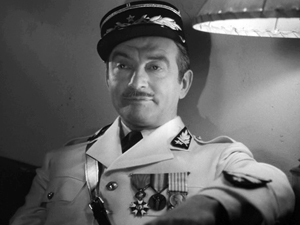
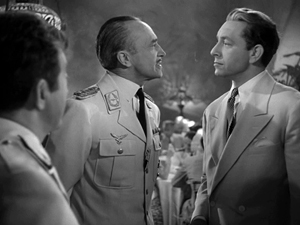
Rick occupies a psychological space between Renault and Victor. In the end, by siding with Victor, Rick not only abandons his negative behavior pattern, he also begins the process of overturning the rules of the normal world. The change is suggested by Renault’s becoming, as it were, Rick’s first convert. They leave together to join up with a mysterious free French garrison at Brazzaville.
Rick’s character arc is not an isolated device but a central organizing principle of the plot. The same process is at work in The Apartment.
The Apartment: A normal world?
The Apartment tells the story of an ordinary accountant, C. C. Baxter, played by Jack Lemmon. In a calculated attempt to gain a promotion, Baxter allows his bosses to use his apartment for their extramarital affairs. Baxter is also smitten with an “elevator girl,” Fran Kubelik, played by Shirley MacLaine. But unbeknownst to Baxter, at least during the first half of the film, Fran is having an affair with the big boss, Mr. Sheldrake, played by Fred McMurray. Sheldrake is only stringing Fran along, though, and because of his treatment of her she eventually attempts suicide. Baxter finds her just in time and with the help of his neighbor, Dr. Dreyfuss, saves Fran’s life.
Baxter becomes Fran’s caregiver, but also Mr. Sheldrake’s protector, ensuring that news of Fran’s suicide attempt does not leak out. In the end, however, Baxter learns the error of his ways and finally follows the advice he is given by Dr. Dreyfuss.
When Baxter does become a mensch, he succeeds in winning Fran’s heart.
The six-step strategy displayed in Casablanca is launched in the opening few minutes of The Apartment.
We learn a great deal from this opening sequence. We learn that Baxter has a problem with his apartment and we learn that Mr. Kirkeby, the boss using his apartment, doesn’t respect him. The boss’s disdain helps garner sympathy for Baxter. Yes, Baxter is ill-advisedly allowing his bosses to use his apartment, but his bosses take advantage of the situation and mistreat him.
So why does Baxter let his bosses push him around? He wants a promotion, but why must he be so obsequious to get it? Is he unworthy? No. As we see right away, he is a hard worker.
In the opening voiceover we learn that Baxter is smart, or at least good with numbers, that he is enthusiastic about his work as an accountant, and that he respects and is impressed with the company he works for. He is a diligent company man, both capable and earnest. So why is he such a pushover?
To answer that question we need to look at the normal world. The film almost immediately introduces us to Consolidated Life, the insurance company Baxter works for. It is a beehive, an impersonal and monotonous corporate colony. And Baxter is depicted as an anonymous drone: he works on the 19th floor, Section W, at desk #861.
Baxter is not just a cog in a machine; he also behaves like a machine when we see his head bob up and down in unison with his calculator. If at the end of the film Baxter becomes a mensch, a human being, then at the beginning of the film he is an automaton. He does what he is told. That is part of being a company man.
Fran, who functions as co-protagonist, works inside a machine. Her gray uniform blends into her surroundings.
Fran and Baxter are insignificant, powerless and anonymous people lost among the 8,042,783 New Yorkers. In The Apartment status, power, money and the freedom to do what you want, other people be damned, are the highest values people can aspire to. And those without status, power and money are nobodies. That is how the normal world works in The Apartment.
The only way to escape anonymity and insignificance is to climb the ladder of corporate and/or social success, and presumably become one of the exploiters. This is exactly what Baxter and Fran try to do. Baxter, after all, wants to be a big boss like the men he lets use his apartment. His gamesmanship eventually allows him to jump the promotion line. His co-worker has been at Consolidated Life twice as long as Baxter, but because he does not play the game, he is not promoted.
Fran wants a promotion too: from mistress to wife of a very powerful man. She becomes to some degree complicit with Sheldrake in disregarding the needs of his wife.
Both Baxter and Fran, then, are willing to climb over other people to get what they want. Still, they aren’t vicious. In most ways, Fran is a kind and encouraging person. When Baxter comes up for his first promotion she tells him, “It couldn’t happen to a nicer guy.” And Fran actually loves Sheldrake. Fran is not Sylvia, a woman we meet in the opening sequence, who seems mostly interested in having a good time.
Just as Fran is not like Sylvia, Baxter is not like his bosses. For one thing, he apologizes to his neighbors for all the noise his bosses make during their trysts. He even tries to correct the situation. And unlike Sheldrake and Kirkeby, Baxter does not want to simply seduce Fran.
Baxter is naïve, a romantic, a rank sentimentalist. And his chances for success in this world, like Fran’s, are limited.
In sum, Baxter and Fran are of two minds. They exhibit both a positive behavior pattern and a negative behavior pattern. This is very important. Because they both basically have good intentions—or aren’t cynical enough for the world they inhabit—they can grow as characters.
But given their good intentions, why do Fran and Baxter have negative behavior patterns? The answer is that each harbors a false belief (related to the normal world) that motivates their negative behavior pattern. Fran’s false belief is that Sheldrake loves her. And because of this she continually trusts him. Here she is going off in a cab to sleep with him, even though we know that Sheldrake hardly cares about her.
In parallel fashion, Baxter believes that corporate success will bring him happiness, but in the end it doesn’t. He gets his big fat promotion with his own office, and he’s miserable.
Still, as long as Baxter harbors the illusion that climbing the corporate ladder will make him happy, he is willing to kiss up to his bosses and allow them to push him around as a way to get ahead. That is Baxter’s negative behavior pattern: he is a toady.
The Apartment: Delay and the darkest moment
Sustaining a character’s positive and negative behavior patterns often becomes of central importance in a film’s second half, when what Kristin calls the Development is launched. In some films the protagonist actually has enough information by this point to reconsider the false belief, but that doesn’t happen. The protagonist clings to error.
The midpoint of The Apartment is the moment roughly an hour into the film when Baxter discovers Fran comatose in his bed. As Kristin points out, a midpoint typically recasts character goals, and Baxter gains a new purpose: saving Fran.
Baxter is worried that Fran will try again to kill herself, so a lot of the Development focuses on his attempts to keep her safe. But Baxter is also protecting Sheldrake during this section of the film. He induces the doctor not to report Fran’s suicide attempt to the police, and he hides Fran in his apartment until she’s better. Baxter’s competing motives, in other words, remain in play. Helping to save Fran’s life, and learning that there is a terrible cost to Sheldrake’s callous behavior should be enough to motivate Baxter to turn against Sheldrake. But he remains on the job.
We see something similar happen about twenty minutes into the Development, when Baxter phones Sheldrake to tell him about the suicide attempt. Sheldrake won’t even come to visit Fran. Baxter is confused and disappointed by this response, but he nonetheless promises his continued support.
This is a common strategy during a Development section. The flawed protagonist is one or more times brought to the brink of character change, but he or she pulls back, clinging to the negative behavior pattern. We see exactly this withdrawal in Casablanca. At the midpoint in that film Ilsa visits Rick and tries to tell him about her relationship with Victor. Rick has an opportunity here to accept the truth, which would set him free, but he rejects it. He clings to his false belief that Ilsa betrayed him and Paris.
Rick is given a second chance roughly halfway through the development when he allows the young couple to win at roulette. Rick’s employee, Karl, is watching from the sidelines, and he is thrilled. He believes that Rick is turning over a new leaf, and so do we. But immediately following this event Victor directly asks Rick for the letters of transit, and Rick bitterly says no.
These are of course delaying tactics, and ones we should expect. Kristin points out that the Development section usually contains numerous delays that create rising tension and suspense, while forestalling resolution.
In The Apartment‘s Development section, certainly Fran’s change of heart is delayed. Despite being driven to attempt suicide by Sheldrake’s treatment of her, she nonetheless announces the next day that she’s still in love with him. She even reaffirms her false belief.
Fran’s near-death experience should be enough to convince her that she needs to end her relationship with Sheldrake, but she too clings to her false belief and negative behavior pattern. Still, in spite of all this, it would be a mistake to say that no progress is being made. Baxter after all is horrified by what Fran has done to herself and Fran is beginning to entertain doubts. She says that “maybe” Sheldrake loves her. And all of this culminates in a moment of self-knowledge:
They are, in short, changing. Also, the possibility of a romantic relationship is finally introduced when Baxter and Fran prepare to sit down to a candlelit dinner together.
With these new story premises in place, the stage is set for Baxter and Fran’s final changes of heart in the climax. But not before a few more delaying tactics are deployed.
First, Fran’s brother-in-law Karl arrives and breaks up Fran and Baxter’s dinner plans. Then Baxter visits Sheldrake to tell him that he is in love with Fran and intends to marry her. But Sheldrake beats him to the punch. His wife has found out about his philandering and kicked him out of the house. Now Sheldrake plans to marry Fran. But to thank Baxter for taking care of business, Sheldrake gives him his big promotion.
As we’ve seen, corporate success is no longer what Baxter wants. In current screenwriter parlance, this is his darkest moment. It’s immediately followed by this exchange:
Fran is clearly ambivalent about her impending marriage to Sheldrake, and Baxter is clearly acting out, trying to hurt Fran. Also, Fran is deeply disturbed to see the cynical side of Baxter out in full force. And this brings me finally to the possible world. As we also saw in Casablanca, the story world in The Apartment is divided, and again the question is who will the protagonist become. Will Baxter grow up to be Dr. Dreyfuss, who represents a communal worldview, or will he grow up to be Mr. Sheldrake, who represents a selfish worldview?
Now it seems that Baxter has become Sheldrake–except we don’t, or aren’t supposed to, believe him. The real point of the exchange between Baxter and Fran is that Baxter no longer holds his false belief. He is using it now only as a defense mechanism, as a cudgel to punish the woman he sees as having betrayed him. He is, in short, pretending. And since he is no longer committed to his false belief he can change.
As has become typical in Hollywood films, the protagonist’s darkest moment leads to enlightenment. In the very next scene Sheldrake asks Baxter for the key to his apartment so that he can bring Fran there for New Year’s Eve, and Baxter says no. When Sheldrake threatens to fire him, Baxter angrily throws a key onto Sheldrake’s desk, and the quiet confrontation ensues.
Baxter thought that the way the stand out was to play along, but in the end he discovers that the way to stand out is to stand alone and cease to be a collaborator. Also, Baxter’s transformation, like Rick’s in Casablanca, inspires a conversion in another character, Fran, and in this way it suggests an overturning of the rules of the normal world. As we’ve already seen, Fran is ambivalent about her new relationship with Sheldrake. And when Sheldrake at a New Year’s Eve party tells Fran that Baxter quit and wouldn’t give him the key, she smiles mysteriously as if finally seeing the light.
She realizes it is Baxter who loves her and not Sheldrake. So she abandons her false belief and the negative behavior pattern it engenders. She leaves Sheldrake and rushes to meet Baxter. And that’s the end of the story.
Two men of two minds
Finally, how enduring are these character-arc patterns? Consider, briefly, Jaws and About a Boy.
Chief Brody is a former New York City police office who has become sheriff of a small island community, Amity. Why did he leave the city? Because, as he explains, crime in New York is out of control and he couldn’t do anything to change that. So he has come to Amity, a world in which, he thinks, one person can make a difference.
Yet for this cop, living in Amity is a cop-out. There hasn’t been a murder there for thirty years. It is a town where one person doesn’t have to make a difference. Yet when the shark arrives, Brody discovers that Amity is the same as New York City. He wants to close the beaches, but the city officials won’t let him. He crumbles under their pressure. Brody is as powerless to make a difference in Amity as he was in New York.
That is how the normal world works in Jaws, and Brody, like Baxter, initially conforms to it. At the beginning of his story he’s defeatist. He always backs down in the face of conflict. He is not confident. Later, on Quint’s boat he wants to turn back. He’s always feeling overwhelmed, a state expressed in his fear of drowning. So Brody goes along to get along.
Accepting his powerlessness is Brody’s negative behavior pattern. But like Baxter and Rick, he can’t help caring. He works to close the beaches, if only for a day, and after a young boy gets killed, he accepts the blame.
Brody exhibits the typical split between positive and negative behavior. Yet because he’s of two minds, he can change. In a crucial turning point, he vows to join Quint and Hooper in hunting the shark. At the climax, he doesn’t back down. He is fearless and he does make a difference. He helps save the town, and in the process he gets over his fear of drowning.
About a Boy, a British-American-French coproduction, released domestically by Universal Pictures, suggests that the techniques I’ve been considering have some cross-border appeal. A 38-year old man-boy, Will Freeman, played by Hugh Grant, lives in luxurious isolation off the royalties from a popular Christmas song his father composed decades before.
Neatly reversing John Donne’s dictum, Will asserts in the opening moments that “all men are islands.” In accordance with this philosophy he has built for himself “a little island paradise,” a swanky apartment filled with cool consumer goods like a chrome-plated espresso maker, a sleek TV, and a vast CD collection. But then Will meets and ultimately befriends Marcus (Nicholas Hoult), a 12-year old misfit with a suicidal mother, who lives his own willed exile because of not being accepted at school.
The story deals with how Will and Marcus and Marcus’s mother Fiona (Toni Collette) become integrated into the world.
Will and Marcus are co-protagonists, but Will’s character arc is more pronounced. Will’s false belief, of course, is that he can make it alone. The problem, though, is that solitude leaves his life devoid of meaning. He has no job and he sleeps with many women but doesn’t date any of them, at least not for very long. As he several times states, “I don’t do anything,” or more to the point, “I do nothing.” Will, however, sees this lack of meaning as a positive: “Me? I didn’t mean anything, about anything, to anyone, and I knew that that guaranteed me a long, depression-free life.”
Will’s false belief is not simply that he thinks he can make it on his own; he believes he can avoid misery by avoiding commitments. This is most apparent when Marcus’s mother attempts suicide.
While Will helps out by driving Marcus to the hospital, the sequence ends with a grim bit of voiceover as we see Will drive off alone into the night.
The thing is, a person’s life is like a TV show. I was the star of the Will show, and the Will show wasn’t an ensemble drama. Guests came and went, but I was the regular. It came down to me and me alone. If Marcus’s mom couldn’t manage her own show, if her ratings were falling, it was sad, but that was her problem.
Will, however, is of two minds, a state the film expresses in a number ways. First, despite being a committed loner, he very early in the plot begins dating a single mother. As we see him gleefully playing with this woman’s young son, he says in voiceover: “And for the next few weeks I was suddenly Will the good guy.”
When Will decides to break up with this woman, in part because she made him late to an IMAX movie, he adds, “I was going to have to end it, but having been Will the good guy I did not relish going back to my usual role of Will the unreliable, emotionally stunted asshole.” He is, apparently, self-aware, and his use of the word “role” seems intentional, suggesting as it does that Will the Asshole is a persona he adopts to avoid complications. We also learn that in the past Will volunteered at a soup kitchen, though he admits he never made it there to help out. And we discover that for a time he worked the phones at Amnesty International, but seems to have mostly used this as an opportunity to pick up women on his call lists.
The point the filmmakers are comically making is that Will has good impulses, but is unable to sustain them in the long term. He has both a positive behavior pattern and a negative behavior pattern, the latter very clearly motivated by his false belief.
The normal world is established as one in which people are abandoned. The film is full of single moms, including Marcus’s mother, and Will tries to abandon everyone he meets. In the opening scene he throws away the phone number of a woman he has slept with, even as she is leaving an inviting message on his answering machine.
Most significantly, Fiona almost abandons Marcus when she attempts suicide. In the wake of this, Marcus is worried that his mother will try again, and that she may succeed when he’s not there. He gets an idea: “Suddenly I realized that two weren’t enough. You needed backup.” With this realization Marcus defines the possible world for us. It is one that is comprised of teamwork and mutual support. In search of this new world, Marcus attempts to fix up Will with his mother. His goal is to get Will to marry her so that they can both look after her.
The dreamed-of marriage never occurs, but Marcus and Will slowly become friends, spending most afternoons together watching TV and sometimes talking. Will helps Marcus become more cool, which allows him to begin making friends at school.
Because of his growing friendship with Marcus, Will comes to realize that misery stems from loneliness, not commitment. He abandons his false belief and the negative behavior pattern it motivates. Not only does he fall in love, but for Marcus’s sake he also offers his friendship and emotional support to Fiona to help prevent her from attempting suicide again. In this way he demonstrates that he has learned the necessity of real, meaningful relationships. The film ends with all the main characters together in Will’s apartment–once his desert island paradise–sharing Christmas lunch. There is even a hint that Fiona too will find love. This ending marks a clear overturning of the rules of the normal world.
Two Minds, Positive and Negative Behaviors, False Belief, Normal vs. Possible Worlds: Maybe all character arcs don’t follow these principles. We’ll have to test them against many more movies. At least, though, they seem to offer widespread, enduring strategies for constructing character change.
In every case I’ve considered, the protagonist discovers his or her “true” self, the good or well-adjusted person that has been lurking within all along. Which suggests that radical, 180-degreee character change is rare–most likely because it is difficult to motivate. Arguably, though, Breaking Bad pulled off a version of it. And speaking of Walter White, it remains to be studied how character change is typically handled in long-form television, which is becoming an ever more significant mode of Hollywood storytelling.
For more on principles of Hollywood plotting, see the entry “Open Secrets of Classical Storytelling,” “Understanding Film Narrative: The Trailer,” and “Time Goes by Turns.” Some ideas about character change are set out in “Three Dimensions of Film Narrative.” There’s a bit on The Apartment as a 1960 film here.
About a Boy (2002).
Manhattan wrapup: RHAPSODES and more
Aliza Ma and RZA at Metrograph, introducing screenings of Five Element Ninjas and House of Traps.
DB here:
We’re about to leave NYC after three months. I’ll miss all the movies and museums and food and friends, but I won’t miss the noise and congestion. I especially won’t miss the obliviousness of New Yorkers on the pavement–frowning into their cellphones as they nearly collide with you, steering baby assault vehicles as big as WW II half-tracks, and letting their longleashed pooches stray across streams of pedestrian traffic (there but for the grace of dog go I).
Okay, no more geezer complaints. Remarkable, the calming influence of an onion bagel with lox and cream cheese.
Our last days here have been really busy. Kristin gave a talk to the Egyptological Seminar of New York, “Beyond Thutmose: The District of Sculptors’ Workshops at Amarna” at the Metropolitan Museum of Art on Thursday. On Friday, I participated in a Film Comment podcast with critics Violet Lucca and Nick Pinkerton. We had a good time, talking about my book The Rhapsodes and other stuff. Here they are afterward in the Film Center.
Speaking of The Rhapsodes, Saturday I went to the Museum of the Moving Image in Astoria, where David Schwartz had mounted a four-film series tailored to the book. The first screening, Citizen Kane in a nice 35mm print, brought out a fair number of people.
Several people told me it was their first viewing of the film on the big screen, and indeed scale helps with this movie. It becomes more looming, from that screen-filling title onward, and you can see little details cunningly embedded. I noticed a couple of new items that I may write about later this summer. (Early in our stay, I already did a Welles birthday tribute here.) You always find more filigree in Kane; it looks forward to all our modern movies with in-jokes and Easter Eggs.
After Kane and a book signing (thanks, customers), I rushed off to Metrograph, a new venue with a consummate programming policy. There I met Aliza Ma, Jake Perlin, and their colleagues before catching the Chang Cheh double bill curated by none other than RZA of the Wu-Tang Clan. You see him with Aliza, in Scope of course, at the top of today’s entry.
 On Sunday I caught up with Subway Cinema/ NY Asian Film Fest co-founder Goran Topalovic and critic-filmmaker Eddie Mullins (Doomsdays) at a wonderful Serbian restaurant. Much talk of Hong Kong film, of course.
On Sunday I caught up with Subway Cinema/ NY Asian Film Fest co-founder Goran Topalovic and critic-filmmaker Eddie Mullins (Doomsdays) at a wonderful Serbian restaurant. Much talk of Hong Kong film, of course.
Later that day, after seeing Hong Sangsoo’s latest, we had a late dinner with 125% cinephile Michael Barker, Co-President and Co-Founder of Sony Pictures Classics. Amidst talk of great 30s and 40s films, we learned that SPC is gearing up several new releases, notably the Cannes hit Toni Erdmann for December.
During my stay, The Rhapsodes came out and got several reviews already. It just picked up another, a wide-ranging, idea-packed discussion from one of Cinema Scope‘s best writers, Andrew Tracy.
Our last nights have been devoted to catching up with friends we’ve missed in earlier weeks. Above are Jerry Carlson and Deb Navins with Kristin in front of the Royal Tennenbaums house in their neighborhood. Below is a shot of Kristin and me with my college friend, film publicist and director’s representative Lucius Barre.
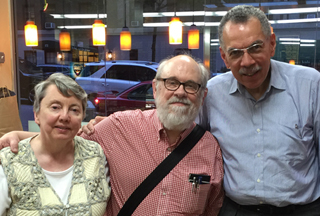 Our time here has just flown by. I finished a decent-ish draft of my 1940s book, but I haven’t done as much on other projects as I’d wished. I did, though, give talks at the Columbia Seminar on Cinema and Interdisciplinary Interpretation (thanks, Bill Luhr, Cynthia Lucia, and Krin Gabbard), Sacred Heart University (thanks, Sid Gottlieb and Sally Ross), Tufts University (thanks, Malcolm Turvey), Videology (thanks, Erik Luers and Austin Kim) and the 92nd Street Y (thanks, Alicia Harris-Fernandez). Going Upstate, as we New Yorkers call it, I gave the James Card Memorial Lecture at George Eastman Museum (thanks, Paolo Cherchi Usai and Jared Case), did some film viewing there, and visited the annual conference of the Society for Cognitive Studies of the Moving Image. No less fun: I met Paolo Gioli at the Harvard Film Archive (thanks, Haden Guest; blogged here) and re-met Terence Davies at MoMI (thanks, David Schwartz; blogged here).
Our time here has just flown by. I finished a decent-ish draft of my 1940s book, but I haven’t done as much on other projects as I’d wished. I did, though, give talks at the Columbia Seminar on Cinema and Interdisciplinary Interpretation (thanks, Bill Luhr, Cynthia Lucia, and Krin Gabbard), Sacred Heart University (thanks, Sid Gottlieb and Sally Ross), Tufts University (thanks, Malcolm Turvey), Videology (thanks, Erik Luers and Austin Kim) and the 92nd Street Y (thanks, Alicia Harris-Fernandez). Going Upstate, as we New Yorkers call it, I gave the James Card Memorial Lecture at George Eastman Museum (thanks, Paolo Cherchi Usai and Jared Case), did some film viewing there, and visited the annual conference of the Society for Cognitive Studies of the Moving Image. No less fun: I met Paolo Gioli at the Harvard Film Archive (thanks, Haden Guest; blogged here) and re-met Terence Davies at MoMI (thanks, David Schwartz; blogged here).
And to round things off, my blog entry on Edward Yang’s A Brighter Summer Day is now available in Chinese here. Thanks to Jiahan Xu.
When I get back to Mad City, I must buckle down and revise the 40s book and, I hope, write a blog on types of film criticism today. Also, too: at our Cinematheque, another series dedicated to The Rhapsodes. (Yeah, the PR steamroller is relentless.) I’ll give an introductory talk and introduce the movies.
Is it lunchtime yet?













